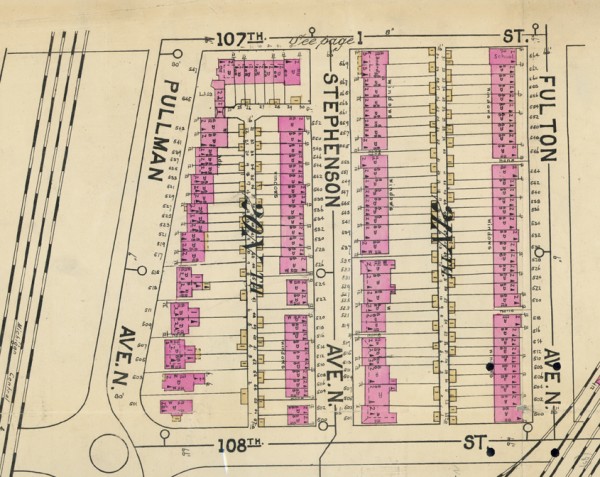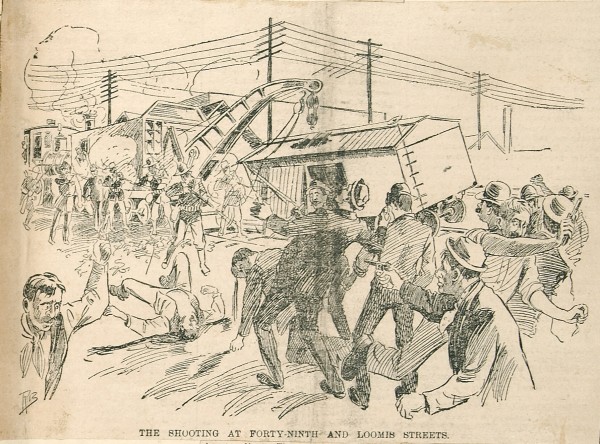Congress instituted the Labor Day holiday in 1894 to quell dissent brought on by that year’s nationwide Pullman Strike that began outside of Chicago. Industrialist George Pullman’s employees turned against conditions that he imposed, caused a national furor and led to death by federal troops.
1893 not only saw the World’s Columbian Exhibition, but it also saw the Panic of 1893. This economic depression resulted from a railroad bubble. Based on a gold run, the industry overproduced and suffered from unsound financing.
 The Pullman Palace Car Company produced railway cars and had introduced the sleeper car. George Pullman set up Pullman, a company town twelve miles south of the Chicago Loop. The company controlled rents and the shops in the town. Hit by the Panic, the company laid off workers and cut wages to the tune of twenty-five percent. However, Pullman did not reduce shop prices or rents.
The Pullman Palace Car Company produced railway cars and had introduced the sleeper car. George Pullman set up Pullman, a company town twelve miles south of the Chicago Loop. The company controlled rents and the shops in the town. Hit by the Panic, the company laid off workers and cut wages to the tune of twenty-five percent. However, Pullman did not reduce shop prices or rents.
A worker’s committee was formed on May 7, 1894, to ask for lowered, more cost-appropriate rent. This was denied on May 7 and 9. Pullman fired three of the committee members. On May 10, the strike was announced and workers in the town of Pullman walked off their jobs. On May 11, four thousand employees shut down the Pullman Palace Car Company plant by going on a wildcat strike, one without union authorization.
Many strikers joined the American Railway Union (ARU). It supported the strike by organizing a national boycott of Pullman on June 26, 1894. 125,000 workers walked off their jobs, refusing to handle Pullman cars.
On June 28, 1864, Congress rushed legislation and unanimously passed Labor Day. Two labor leaders are thought to have generated the idea for the national holiday: Peter McGuire, the co-founder of the American Federation of Labor and Matthew Maguire, the secretary of the Central Labor Union of New York. This gave us a three-day weekend in September, but it did not settle the Pullman affairs.
On June 29, leader of the ARU Eugene V. Debs held a rally in Blue Island, IL. Despite the peaceful intent, tempers flared and led to arson and a derailed train. Sympathy strikes grew throughout the US.
President Grover Cleveland sent federal troops from Fort Sheridan on July 4, 1894. He felt that it was necessary so that mail trains would run. Illinois Governor John Peter Altgeld opposed the federal intervention. He was also an embittered former Pullman employee. In reaction to the troops, strikers lit fireworks, tipped rail cars, and blocked troops.
Rioting continued. By July 6, 700 cars were destroyed and there had been $340,000 worth of damage. On July 7, seven Columbian Exhibition buildings burned. On the same day, national guardsmen fired into a crowd and killed four to thirty people. Federal troops killed another two in Spring Valley, IL.
Debs was arrested and served for 6 months. Few concessions were made to strikers. The Pullman plant reopened on August 6, 1894.
The Cleveland administration studied the strike and it reported that George Pullman’s practices in the company town were “un-American.” Pullman died in 1897. In 1898, the Illinois Supreme Court ordered the Pullman Palace Car Company to divest ownership of the town. Chicago annexed Pullman in 1889.
Pullman did not lower the rent.



There are no voices yet... Post-script us a message below, won't you?